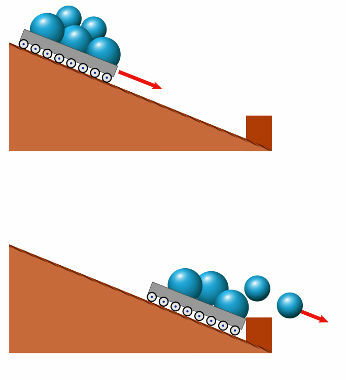THE inertia it is an object's natural tendency to resist changes from its original state of rest or motion. In other words, a stationary object always tends to remain stationary, and a moving body tends to keep moving. This natural tendency that each body has to maintain its initial state can only be changed by applying a strength external.
THE inertia was explained byIsaac Newton in his work entitled Philosophie Naturalis Principia Mathematica (Mathematical Principles of Natural Philosophy), published in 1687. This work laid the foundations for the development of the concepts ofmechanics, branch of physics which is dedicated to the study of movements.

In the image above, the balls tend to keep moving even when the cart is stopped.
Examples of application of the inertia concept
The importance of seat belt useis to prevent ejection from a person's body in the event of a collision. Imagine a vehicle that is traveling at 100 km/h and that, inside it, there is a passenger who is not wearing a seatbelt. If a collision occurs, the vehicle will be brutally
slowed down, and the body of this passenger, by inertia, will tend to maintain the movement, being ejected from the vehicle at 100 km/h;When wetting the hands and shaking them to remove excess water, the liquid leaves the hand by inertia in an attempt to maintain the movement imposed on it;
When starting a bus, the bodies of passengers are pushed backwards in an attempt to maintain rest.
The following video brings an experiment that exemplifies the inertia of a body.
Mass is the quantitative measure of inertia
THE pasta of a body represents the difficulty imposed by it to rest or movement, therefore, it is considered as the quantitative measure of inertia. Imagine that a car is stopped at a traffic light and, beside it, there is a huge truck. The moment the traffic light indicates green, the car leaves in front of the truck without any difficulty, as its mass is much smaller, offering less resistance to movement.
Another case that can exemplify the relationship between mass and inertia is the difficulty in braking a train. The huge mass of this piece of furniture makes it extremely difficult to brake and, therefore, the driver always activates the brakes long before the desired stopping point. We can understand that the greater the mass of a body, the greater its inertia and the more difficult it is to put that object in motion or to stop it.
By Joab Silas
Graduated in Physics
Source: Brazil School - https://brasilescola.uol.com.br/o-que-e/fisica/o-que-e-inercia.htm


